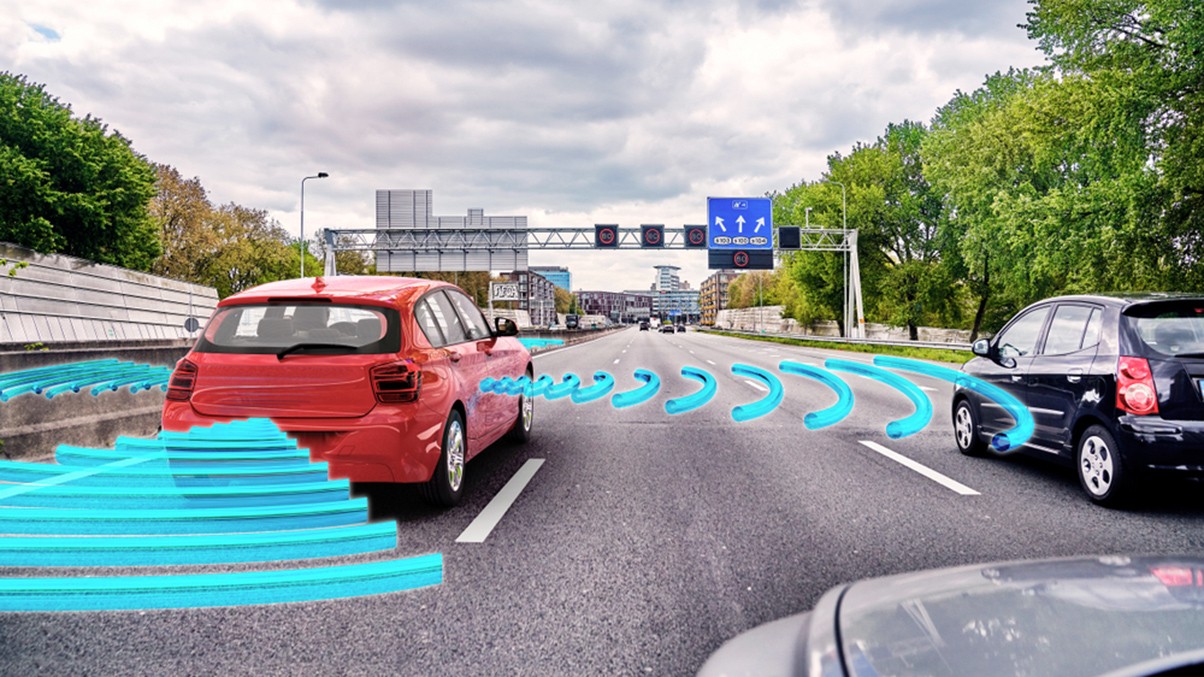This year’s Road Safety Week between 15 and 21 November is themed to pay tribute to the work of road safety campaigners, professionals, individuals and organisations across the country.
One area of road safety that continues to present safety issues and challenges for the government is smart motorways, in particular, the All Lane Running (ALR) smart motorways introduced in 2014. In this article, Lucie Clinch explains what smart motorways are and considers whether they are safe for road users.
In 2016, a Transport Committee report opposed a nationwide rollout of ALR until safety risks had been properly addressed. At that time, the committee called for more driver education, the enforcement of traffic rules and the implementation of more emergency refuge areas.
Fast forward to 2 November 2021 and the publication of the current Transport Select Committee’s third report for the inquiry into the roll out and safety of smart motorways. Unsurprisingly, following recent fatal accidents on smart motorways and against a backdrop of coroners asking for a review of the position, the committee asked the government to pause the roll out of ALR motorways for five years. In doing so, the committee recommended changes to ALR motorways, collection of further data to upgrade and evaluate the safety of existing ALR motorways, and an evaluation of the smart motorways plan so far. It does not seem that much progress has been made on safety concerns since the 2016 report.
Safety data spanning five years is only available for 46 kilometres of ALR motorways. With more time, it is hoped the government will gather data relating to the remaining 180 kilometres of ALR introduced before 2020. The committee said the roll out of ALR motorways in March 2020 was premature, and further work is needed before smart motorways be considered for further use.
What is an all lane running (ALR) motorway?
All lane running means the removal of the hard shoulder to create an extra lane of movement for vehicles. They also incorporate intermittent “emergency refuge areas” for use in the event of an accident or breakdown. Unfortunately, as noted in the report, these areas can be up to 2.5kms apart.
A red X is shown on road signs above if a lane is closed due to an accident. The X is intended to make drivers leave the lane immediately, but the committee was told that it could take up to a minute for a lane to be closed upon the report of an accident. Alerting drivers and enforcing an immediate lane change is difficult.
The committee heard that many people find the thought of breaking down on ALR frightening, particularly if they are some distance from emergency refuge areas, some of which are not clearly signposted.
What is a dynamic hard shoulder?
A dynamic hard shoulder means the hard shoulder is converted into a traffic lane at peak times to ease congestion. The hard shoulder will be signalled as open with a blank sign or closed by an X. The transport committee says this confuses drivers, as they do not know when the hard shoulder could or should be used. They recommend set times when the hard shoulder may be used in this manner so that there is clarity for drivers.
Are smart motorways safe?
Statistics around incidents on smart motorways are not encouraging and are detailed fully in the report with reference to a National Highways (previously Highways England) review. While National Highways confirms that injuries and fatalities have reduced overall since the introduction of smart motorways, injury and fatality rates seem to be rising on ALR highways.
In 2019, 15 people were killed on “all lane running” and “dynamic hard shoulder” motorways, which is four more deaths than in 2018. When considering deaths in relation to miles of smart motorway, statistics show there was one death per 43 miles of road in 2016, rising to one per 17 miles in 2019. Understandably, reflection of death per miles in this manner might seem insensitive to those whose family members have been injured or died in smart motorway incidents. However, given that the UK network comprises 2,608 miles of major A roads, 1,564 miles of conventional motorways and 345 miles of smart motorways, these numbers seem relatively high in the context of the distance over which a car might travel on smart motorways.
The only five-year Post Opening Project Evaluation (POPE) published showed that a smart motorway scheme on the M6 became less safe as traffic levels rose, with collisions rising by 50%.
While the Transport Department and Highways England (National Highways’ predecessor) made several promises in relation to safety in 2016, the committee noted that the rate of live lane incidents on all-lane running motorways remains high. Some 40% of breakdowns on all-lane running motorways take place in a live lane, and most smart motorways incidents involve a stationary vehicle.
Detecting a stopped vehicle in a live lane
The RAC reported to the committee that only 23% of drivers trust the highways authority to identify a stopped vehicle and respond accordingly. National Highways says the current use of CCTV causes an average of 17 minutes to detect a stationary vehicle. However, the committee could not find “up to date reliable information on the time it takes for live-lane incidents to be identified”.
The inquiry found that identification of stopped vehicles is mainly carried out by CCTV cameras, which are prone to failure and not routinely monitored. Without a clear identification and action system, it is difficult for monitoring staff to verify and respond to incidents urgently.
The introduction of stopped vehicle detection (“SVD”) technology, which uses artificial intelligence to detect stopped vehicles in around 20 seconds, is crucial to ongoing safety. Roll out of this crucial technology has been extremely slow, with only 18% of ALR motorways having it installed by the end of 2019. Highways England stated during 2020 that the issue was retrofitting the technology into existing schemes.
In February 2021, Grant Shapps, Transport Secretary, confirmed that the roll out of SVD technology must be sped up across the smart motorway network and would be complete by the end of 2021.
What next for smart motorways?
While statistics show the other types of smart motorways have lower casualty rates than ALR motorways, only ALR motorways are anticipated in the future, including converting existing dynamic hard shoulder motorways to ALR by March 2025. This suggestion was met with opposition from the Transport Select Committee, given that the data is not yet sufficient to justify the permanent removal of the hard shoulder in favour of ALR motorways.
There is limited evidence in support of reinstating hard shoulders all over the road network, but it is felt that the presence of a hard shoulder is also a safety risk. In terms of congestion and impact on safety, it was reported to the committee that reinstatement of a hard shoulder would displace traffic onto local roads, and even a 1% displacement of traffic would result in 0.6% additional fatalities and 2.4 serious injuries. With this in mind, the committee supported the improvement of ALR rather than reinstatement of hard shoulders.
The committee also reported that controlled motorways, which retain the hard shoulder and have the technology to regulate traffic, have the lowest casualty rates of all types of motorways on the Strategic Road Network. They should therefore be reviewed alongside ALR over the next five years.
Public perception
YouGov report that 57% of Britons oppose using smart motorways in Britain, including 34% who are strongly opposed. While 25% of Britons support their use, only 6% strongly support them. The majority of over 65s believe smart motorways are less safe than conventional motorways. RAC head of roads policy Nicholas Lyes said RAC research revealed the “enormous strength of feeling among drivers of all ages about the safety of all-lane-running smart motorways… while there’s support for scrapping these motorways across all age groups, it is highest among those aged 45 and over, with 73% wanting to see the end of these schemes”.
The government recognises the need to improve engagement and public perception of ALR. Many drivers do not feel safe on smart motorways despite their overall safety performance being better than conventional motorways. National Highways must urgently address public education and awareness now and in any future schemes for smart motorways.
You can find further information regarding our expertise, experience and team on our Personal Injury pages.
If you require assistance from our team, please contact us.
Subscribe – In order to receive our news straight to your inbox, subscribe here. Our newsletters are sent no more than once a month.






